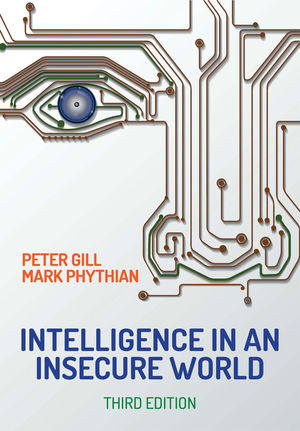Security Cloud Computing (SCC) has arrived and is changing the very fabric of how security is sold, delivered, used and — as a result — valued by customers. It is or will dramatically impact the historic notions of RMR by expanding the sources and changing its structure. While some channel companies have embraced and are profiting from SCC, others may risk missing this high-growth opportunity or worse, lose current customers to competitors offering SCC platform services.
SCC is not a new concept in this industry, as the earliest days of alarm monitoring use a cloud model. But understanding the new opportunities and limits of SCC can benefit your business. As a definition, you may hear concerns that the cloud is not secure. But that is not our cloud. Securing the cloud is important and very smart people are working to ensure that happens. Our opportunity is to use the cloud to secure, not to secure the cloud.
Any physical security-related application (video, identity, access, fire, intrusion, life safety) that is traditionally purchased, installed and managed by the customer can become a cloud-based service with recurring revenue as the business model.
What is driving security cloud computing and is it time for an upgrade to your business plan? What is changing?
1. Infrastructure Technology
Three technology trends are combining to enable successful cloud computing models and the layering of applications on the cloud — in our case, physical security applications on the cloud platform.
|
Overall, IDC Research estimates cloud computing will exceed $72 billion in sales by 2015. Specific to the security video market, IMS forecasts 20 percent plus annual growth of security cloud computing revenue. The 2012 SDM Industry Forecast documents that many security channel companies are currently offering cloud-platform services including remote video hosting, managed access control, hosted video storage/viewing and VSaaS (video software as a service). (See the chart, “Security Cloud Services: A Baseline,” on page 62.)
Clearly, the move from analog to IP is in full force as over 65 percent of all DVRs sold include an Ethernet connection. IMS Research identifies that over 50 percent of all 32-or-more camera installations are now IP and the traditionally analog less-than-16-camera project market is being converged by SCC because remote video monitoring replaces the DVR.
Software as a Service (SaaS) is logical, efficient and now technically practical. The days of buying and installing software that ages quickly and requires upgrades/replacement by users are in the rear view mirror. SaaS changes the way we live our lives and access information from music on iTunes, to customer information on Salesforce.com to e-books from Amazon to entertainment via on-demand video at home. Those failing to meet this call will go the way of Blockbuster and Borders. Having the latest version of software each time you log in and having subject matter experts upgrade and maintain that software is a good thing. The move to virtualization is in full force.
The 2 to 4 billion smartphone and tablet devices where people want to get their information, video and the latest issue of SDM is changing where we work and how we live. A recent SDM readership study found that nearly 50 percent of subscribers are utilizing smartphones and 24 percent are using tablets daily to access business information. This information has to be collected in and distributed from a cloud platform with the latest software in place. (See the chart, “How SDM Readers Access the Internet,” on page 70.)
Combined, this tsunami of change is impacting every business including security.
“There are some very powerful technologies available today. And those that are not using them are running out of excuses,” notes Bud Broomhead, CEO of Intransa, based in Cupertino, Calif.
2. The Security Channel Value Proposition
RMR is the common link between physical security and SCC. It plays to the security channel company’s sweet spot and business value model. Without RMR, the channel company has no equity. The value is not in selling cost plus engineered systems but in creating a recurring revenue or annuity business. Similar to the model of free alarm equipment with a long-term monitoring contract, SCC is the same model. It is just bigger, bolder and wider. And the value of eliminating upfront capital expenses helps grease the gears of commerce for customer approval.
Important for channel companies is understanding their role in the SCC market as application experts. The value channel companies bring to their customers is enabling effective and efficient use of the systems, not the construction of the systems. Non-traditional channel companies including Bicsi members and VARs are embracing SCC because they have lived on SaaS/cloud business models. When asked about SCC, an IT professional would reply, “Why would you do it any other way?” Thus, these companies are embracing security as a new market while traditional security channel companies are embracing SCC as a new business model.
“There will be less value and money associated with configuring a server for a customer in the SCC world. The value and profit will be in improving the application of security as subject matter or application experts,” Broomhead describes. “The power of information analytics will continuously drive security toward the cloud platform.”
To further support this idea, IMS Research notes that analytics will come from IAAS or infrastructure as a service. Without getting caught in technical detail, the simple end game is that the smart security channel integrator will generate RMR from regular reports based on analytics, for example, of daily customer-counting or average queue lengths. Conversely, profiting by configuring servers may be waning for channel companies as those services move to the cloud.
3. The Customer’s Value Proposition
Enterprise or end-user security goals have moved from event response to risk management. The goal is to have situational awareness and prevent events from occurring as well as respond effectively to unforeseen events. Customers are demanding access to all business information when, where and how they want it, and that includes security-related information. SCC offers the best solution to achieve this goal.
At the same time, organizations are more focused on putting resources into their strategic initiatives and outsourcing non-strategic activities. For example, an investment company will outsource payroll to ADP but not the development of algorithms that create a competitive advantage on their trading floor. Smart CSOs understand their success lies in effectively using information, not in owning the systems that create that information. SaaS for security fits perfectly into that trend.
Customers also want to use information to achieve a broader array of business goals. Customer metrics including people-counting and crowd control at public venues are enabling both business and security decisions during fluid situations that benefit all stakeholders. As a result, the opportunity to generate RMR through analytics and reports will grow significantly.
The enterprise market is also adopting SCC due to internal corporate responsibilities, legislation, insurance and risk management. For example, some drug treatment facilities are required to host video content offsite, notes Matt Krebs, business development manager at Axis AVHS, Chelmsford, Mass.
The value in the physical security application must transcend security and create broader business value to be justified. And the channel partner that presents this win/win solution will be benefit.
It is clear the SCC train is leaving the station and the successful channel companies of the future will be smart to get on board now. But the train is just leaving the station. The solutions for security-specific applications will improve — as will infrastructure, bandwidth and SaaS delivery. Similar to iTunes, the cost per transaction will decrease while the volume of transactions will increase. Instead of a homeowner paying $30 per month for one service, intrusion alarms; they may pay $4 for each of 10 services. Who the winners will be in this new economy will take time to know. But the security channel company of today is well-positioned to grab the opportunity and win.









